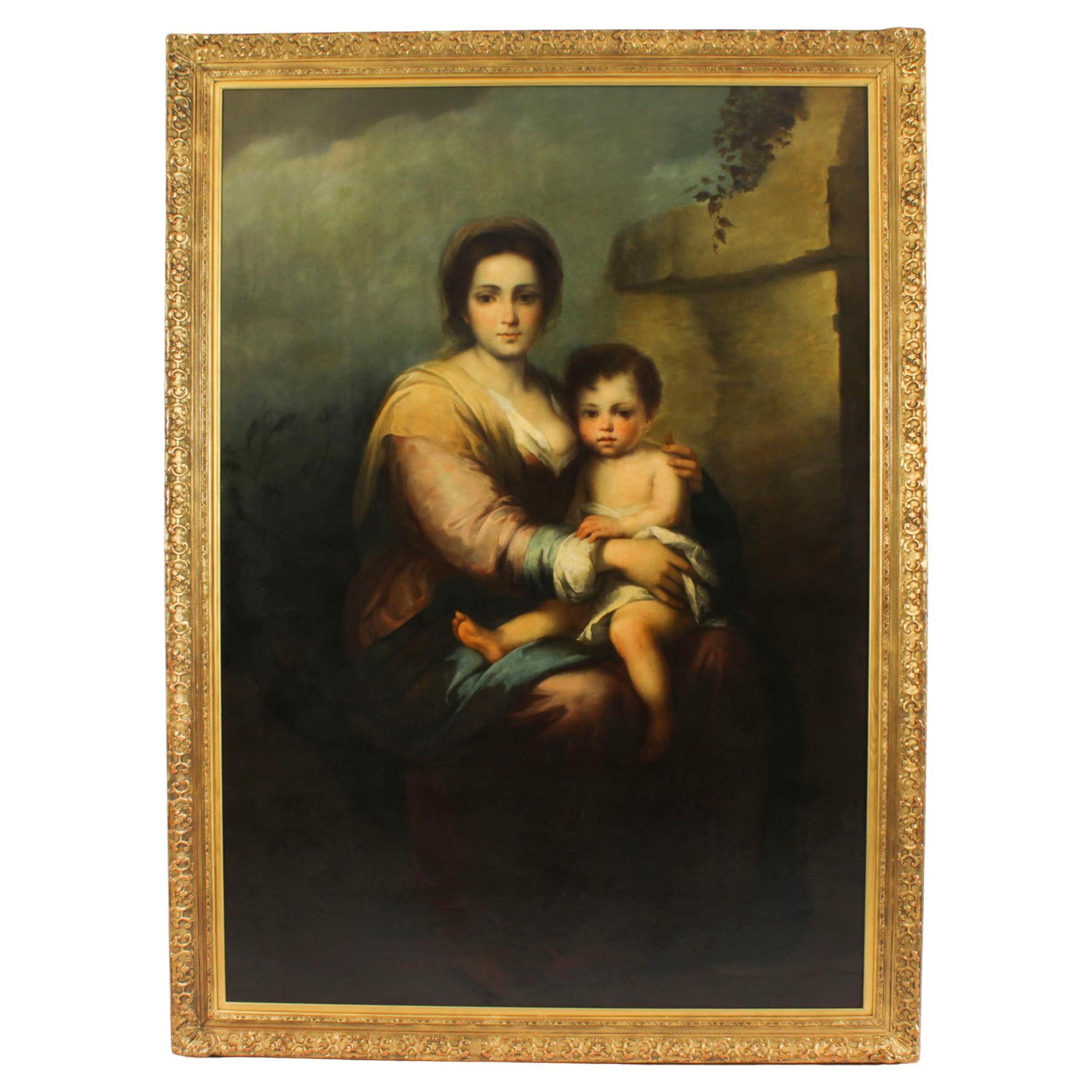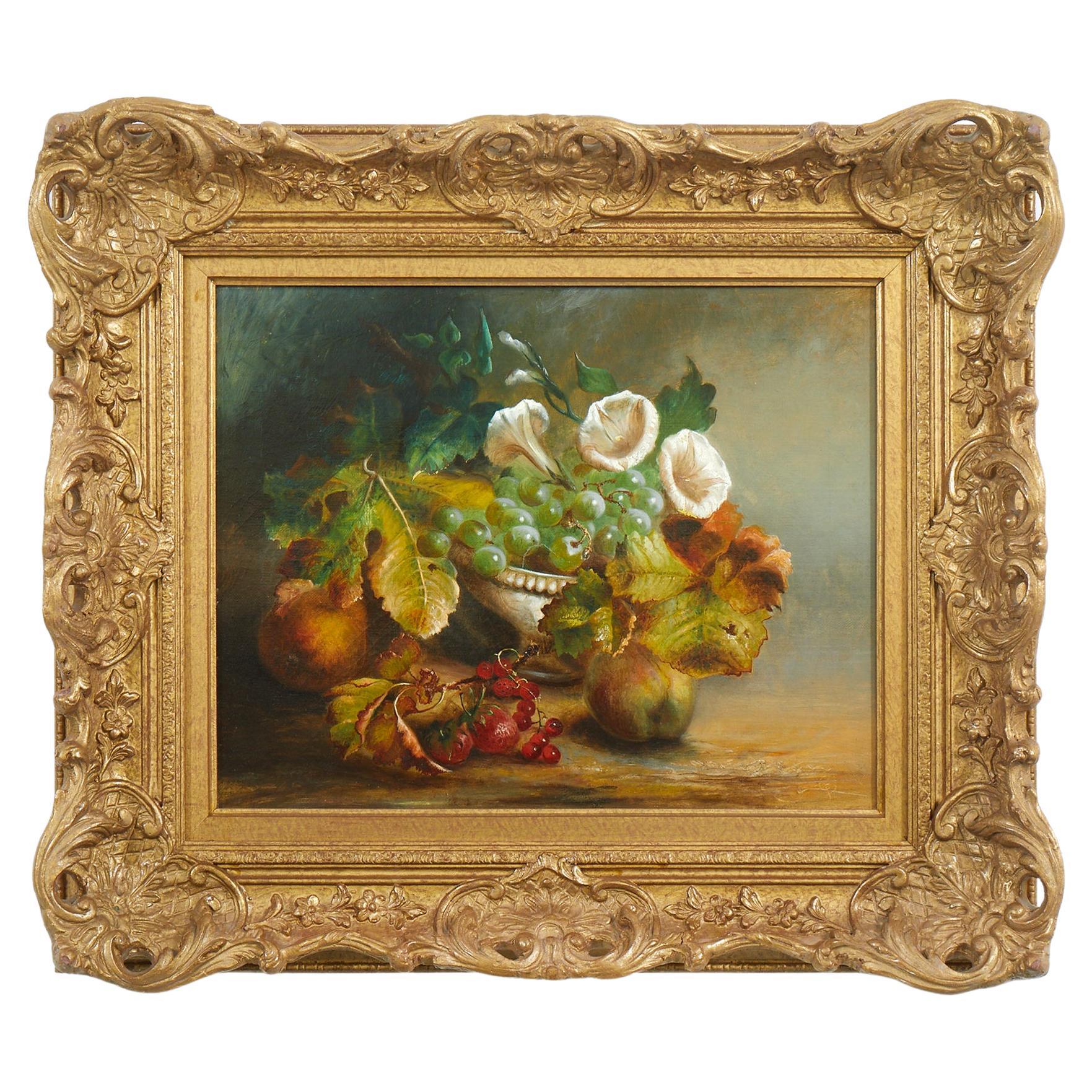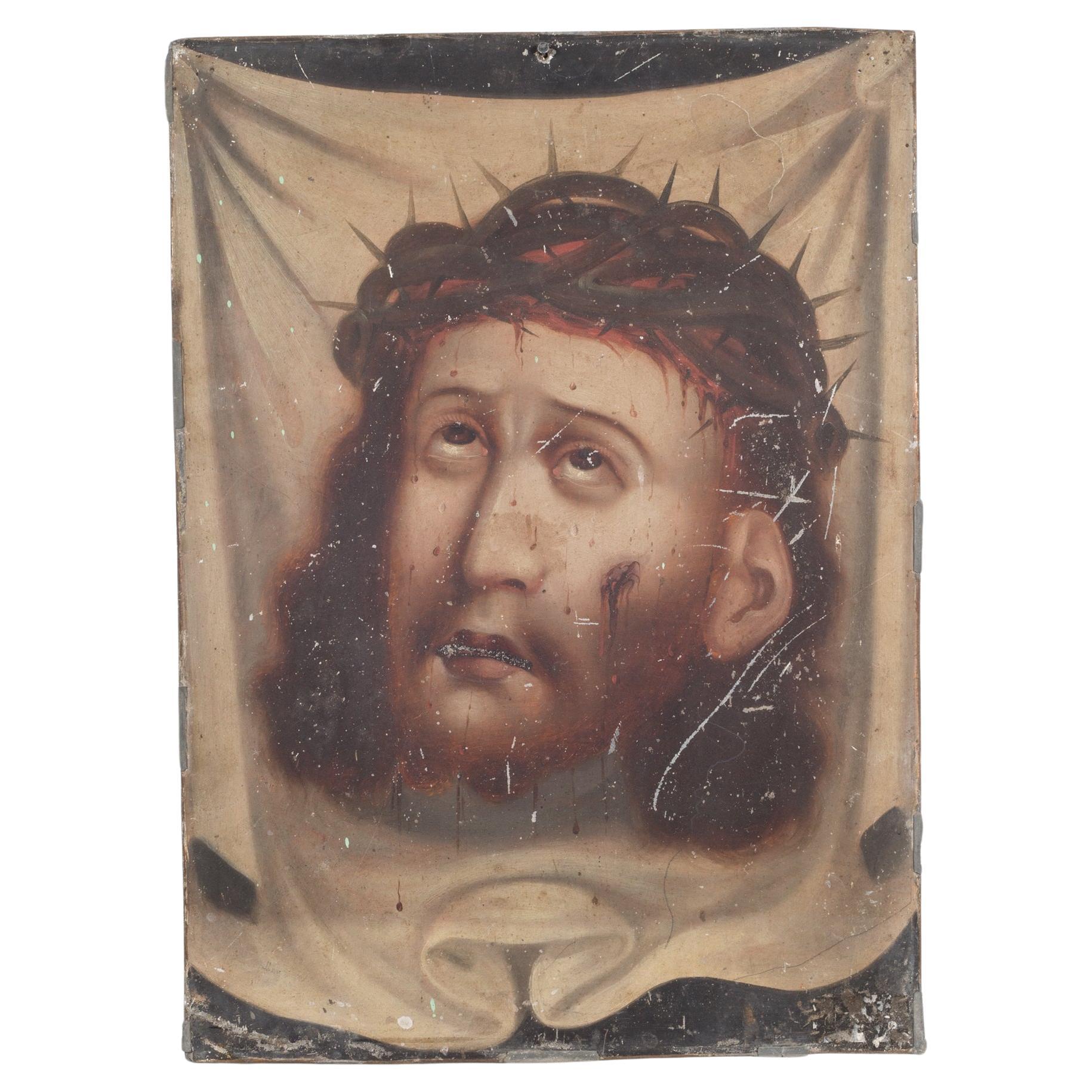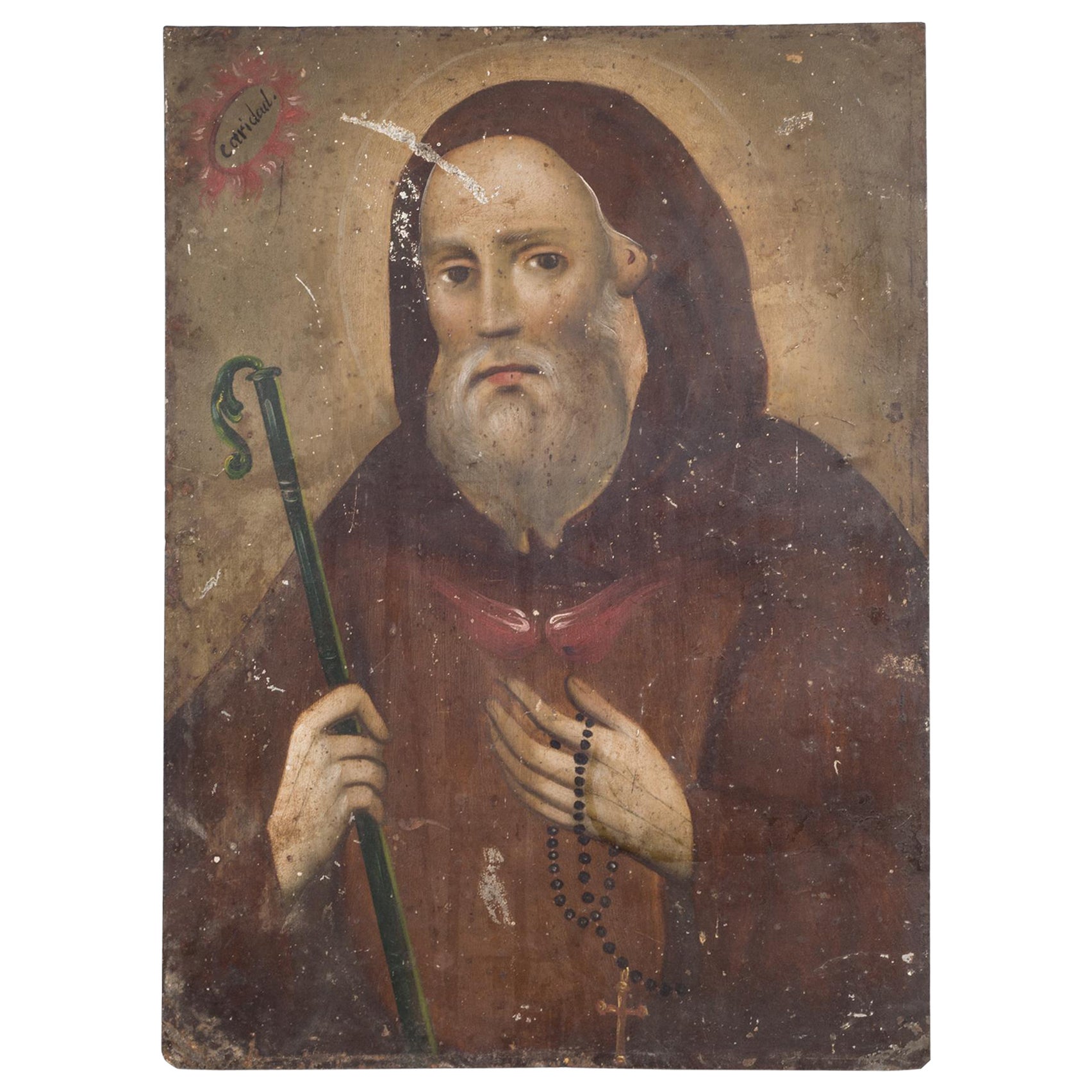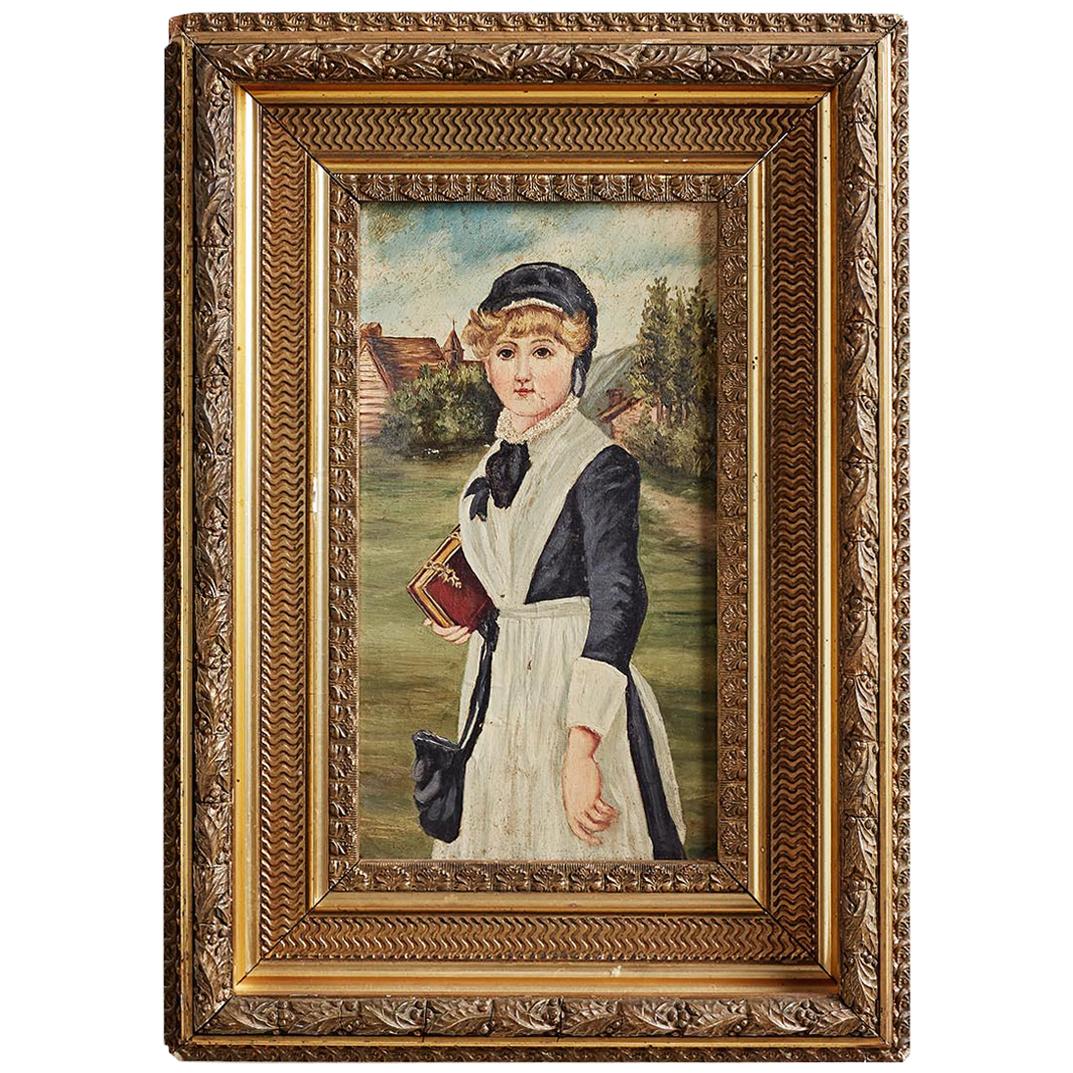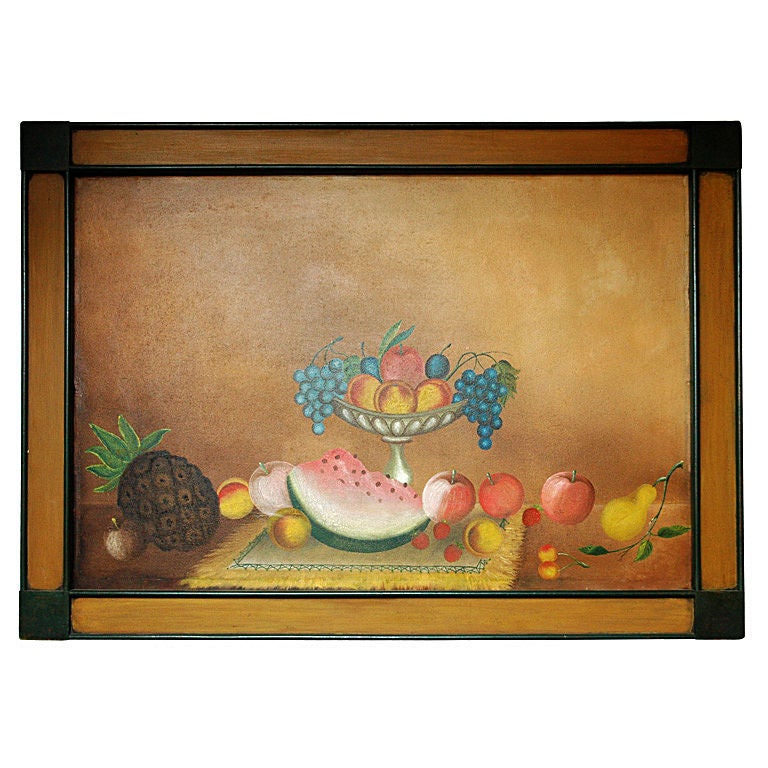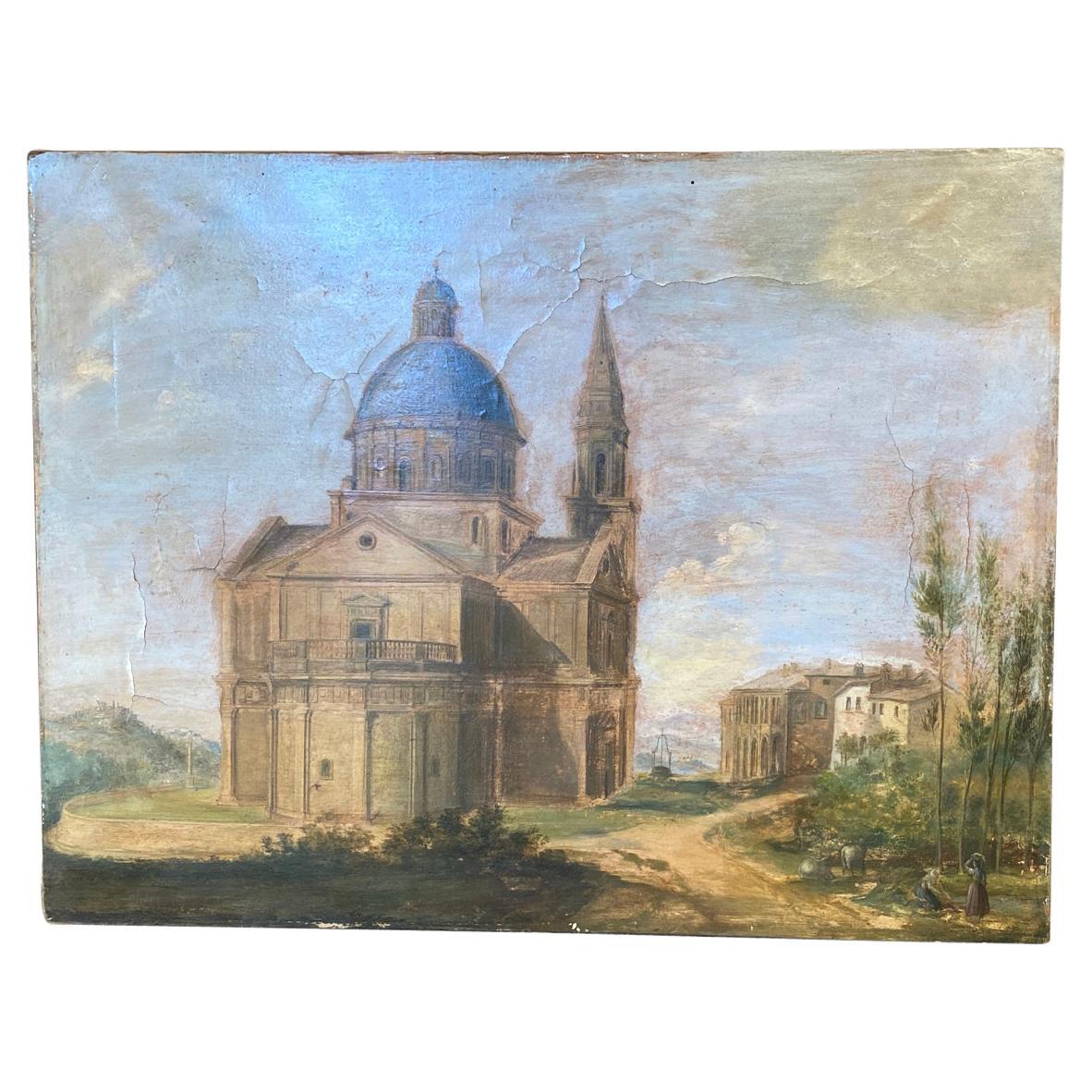
19th Century Mexican Painting - Our Lord of Chalma
View Similar Items
1 of 5
19th Century Mexican Painting - Our Lord of Chalma
About the Item
Dimensions: canvas measures 11 inches x 8 inches. Frame measures 18 inches x 14.75 inches.
Condition: excellent.
- Dimensions:Height: 18 in (45.72 cm)Width: 14.75 in (37.47 cm)
- Materials and Techniques:
- Place of Origin:
- Period:
- Date of Manufacture:Circa 1850
- Condition:
- Seller Location:San Francisco, CA
- Reference Number:1stDibs: U1003228476451
You May Also Like
- Antique Painting Our Lady of The Rosary After Bartolomé Murillo 19th CenturyBy Bartolomé Esteban MurilloLocated in London, GBA large Spanish oil on canvas of Our Lady of The Rosary after Bartolomé Esteban Murillo, early 19th century in date. It features the Virgin Mary holding baby Jesus in her arms, she...Category
Antique Early 1800s Spanish Paintings
MaterialsCanvas
- 19th Century Mexican Religious RetabloLocated in Ross, CAAntique Mexican retablo made in 1890 which includes a woman praying to the Virgin Mary and Jesus Christ. Framed in wooden frame ornately carve...Category
Antique 1890s Mexican Folk Art Paintings
MaterialsTin
$850 / item - 19th C. Mexican Retablo, C.1880Located in San Francisco, CAABOUT An original 19th century Mexican folk retablo. Oil paint on tin. Subject unknown. CREATOR Unknown. DATE OF MANUFACTURE c.1880. MATERIALS AND TECHNIQUES Oil Paint on Tin. CONDITION Good. Wear consistent with age and use. DIMENSIONS H 14 in. W 10 in. HISTORY Retablos, better known as 'laminas' in Mexico, are small oil paintings on tin, wood and sometimes copper which were used in home altars to venerate the almost infinite number of Catholic saints. The literal translation for 'retablo' is 'behind the altar.' This unique genre of art, deeply rooted in European history, was brought to Mexico with the arrival of the Spanish and then ultimately adopted by New World mestizo natives to become what is known today as the Mexican folk retablo. The retablo was an art form that flourished in post conquest Mexico and then ultimately, with the introduction of inexpensive mediums such as tin, reached its pinnacle of popularity in the last quarter of the 19th century. With some exceptions, mostly untrained artists from the provinces worked to produce and reproduce these sacred images; some subjects painted more prolifically than others. A typical "retablero" may have reproduced the same image hundreds, if not thousands of times in his or her career. These oil paintings were sold to devout believers who displayed them in home altars to honor their patron saints. There are virtually hundreds of saints, each invoked to remedy a different situation. "San Ysidro Labrador," the patron saint of farmers, is venerated for good weather...Category
Antique 19th Century Mexican Folk Art Paintings
MaterialsTin
$1,395 Sale Price36% Off - 19th Century Dutch PaintingLocated in Esbeek, NLDutch painting, oil on canvas inspired by an tile panel delft blue, circa 1880-Inspired on a Dutch antique Delft Blue tile tableau (composition of individ...Category
Antique Late 19th Century European Paintings
MaterialsPaint
- 19th Century Oil / Canvas PaintingLocated in Tarry Town, NYEarly 19th century gilt wood framed oil on canvas painting featuring basket of fruits and flowers. The painting is in good antique condition. Minor wear consistent with age / use. Ar...Category
Antique Mid-19th Century Paintings
MaterialsGiltwood, Paint
- 19th c. Mexican Retablo "Veronica's Veil" c.1880Located in San Francisco, CAABOUT An original 19th century Mexican folk retablo "Veronica's Veil" or "El Divono Rostro" in Spain . Oil paint on tin. The Veil of Veronica, known in Italian as the Volto Santo or Holy Face, is a Roman Catholic Relic which, according to legend, bears the likeness of the Face of Jesus that was imprinted on it prior to Jesus' crucifixion. According to Roman Catholicism, Saint Veronica encountered Jesus in Jeruselum on the way to Calvary. When she paused to wipe the sweat (Latin, suda) off his face with her veil, his image was left on the veil. In the small village of Osa de la Vega in Spain, there lived a couple who led a very pious life. They were Gregorio de la Torre and Isabel Corral. From their father, Juan Montilla, they inherited a picture of the Face of Jesus or the Divino Rostro. A story that is told one day, to the amazement of many who confirmed its veracity, the picture began to perspire with living blood. News of this extraordinary event spread swiftly and widely throughout the land. CREATOR Unknown. DATE OF MANUFACTURE c.1880. MATERIALS AND TECHNIQUES Oil Paint on Tin. CONDITION Good. Wear consistent with age and use. DIMENSIONS H 14 in. W 10 in. HISTORY Retablos, better known as 'laminas' in Mexico, are small oil paintings on tin, wood and sometimes copper which were used in home altars to venerate the almost infinite number of Catholic saints. The literal translation for 'retablo' is 'behind the altar.' This unique genre of art, deeply rooted in European history, was brought to Mexico with the arrival of the Spanish and then ultimately adopted by New World mestizo natives to become what is known today as the Mexican folk retablo. The retablo was an art form that flourished in post conquest Mexico and then ultimately, with the introduction of inexpensive mediums such as tin, reached its pinnacle of popularity in the last quarter of the 19th century. With some exceptions, mostly untrained artists from the provinces worked to produce and reproduce these sacred images; some subjects painted more prolifically than others. A typical "retablero" may have reproduced the same image hundreds, if not thousands of times in his or her career. These oil paintings were sold to devout believers who displayed them in home altars to honor their patron saints. There are virtually hundreds of saints, each invoked to remedy a different situation. "San Ysidro Labrador," the patron saint of farmers, is venerated for good weather...Category
Antique 19th Century Mexican Folk Art Paintings
MaterialsTin
